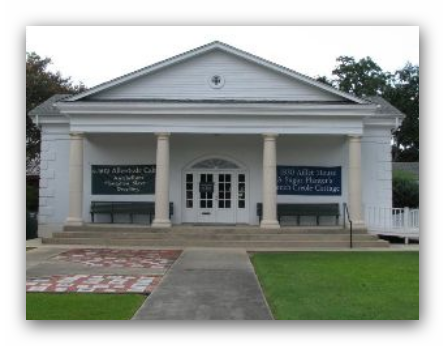
For All the World to See: Visual Culture and the Struggle for Civil Rights
Nov 10 2016 - Jan 16 2017
Port Allen, LA
For All the World to See: Visual Culture and the Struggle for Civil Rights is a nationally touring exhibition from NEH on the Road. Through a compelling assortment of photographs, television clips, art posters, and historic artifacts, the exhibition traces how images and media disseminated to the American public transformed the modern civil rights movement and jolted Americans, both black and white, out of a state of denial or complacency.
In September 1955, shortly after fourteen-year-old Emmett Till was murdered by white supremacists in Mississippi, his grieving mother, Mamie Till Bradley, distributed to newspapers and magazines a gruesome photograph of his mutilated corpse. The mainstream media rejected the photograph as inappropriate for publication. Bradley was able to turn to African-American periodicals for support. Bradley explained that by allowing the public to witness with their own eyes the brutality of segregation, Americans would be more likely to support the cause of civil rights.
Museum visitors can explore compelling images, including photographs from influential magazines, such as LIFE, JET, and EBONY; CBS news footage; and TV clips from The Ed Sullivan Show. Also included are civil rights-era objects that exemplify the range of negative and positive imagery—from Aunt Jemima syrup dispensers and 1930s produce advertisements to Jackie Robinson baseball ephemera and 1960s children’s toys with African American portraiture. For All the World to See is an exploration of the vast number of potent images that influenced how Americans perceived race and the struggle for equality.
For All the World to See: Visual Culture and the Struggle for Civil Rights was curated by Dr. Maurice Berger, Center for Art, Design, and Visual Culture, University of Maryland, Baltimore. It was organized by The Center for Art, Design, and Visual Culture and the National Museum of African-American History and Culture, Smithsonian Institution. For All the World to See has been made possible through NEH on the Road, an initiative of the National Endowment for the Humanities. It is being toured by Mid-America Arts Alliance.
Exhibition overview from museum website
Whether you go or not, the companion publication, For All the World to See: Visual Culture and the Struggle for Civil Rights, is the first comprehensive examination of the ways images mattered in the struggle, and it investigates a broad range of media including photography, television, film, magazines, newspapers, and advertising. These images were ever present and diverse: the startling footage of southern white aggression and black suffering that appeared night after night on television news programs; the photographs of black achievers and martyrs in Negro periodicals; the humble snapshot, no less powerful in its ability to edify and motivate. In each case, the war against racism was waged through pictures—millions of points of light, millions of potent weapons that forever changed a nation. Through vivid storytelling and incisive analysis, this powerful book allows us to see and understand the crucial role that visual culture played in forever changing a nation.
Exhibition Venues & Dates
Nov 10 2016 - Jan 16 2017
Port Allen, LA
Apr 7 2017 - May 25 2017
